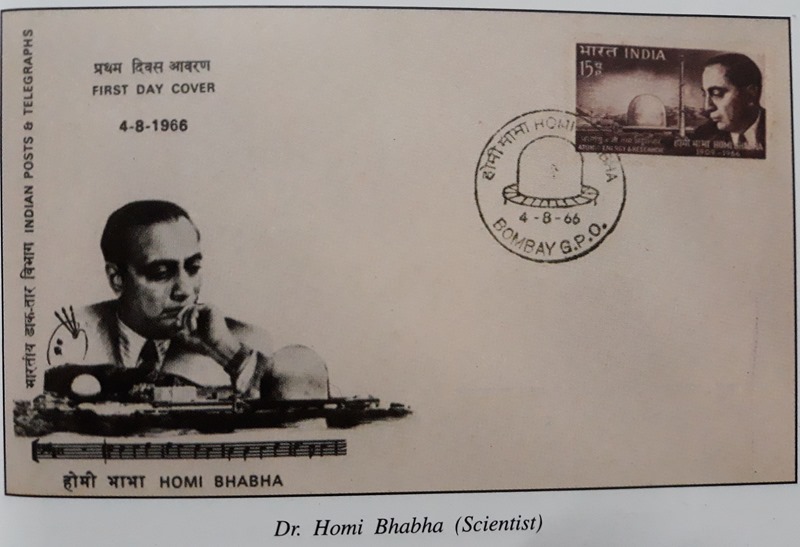A tribute on his 110th birth anniversary by Marzban Jamshedji Giara
He was born on 30th October 1909 at Bombay in a Parsi family. He studied at Elphinstone College,, Bombay and at Cambridge University, U.K. He had the Isaac Newton Studentship. He studied in Copnhagen, Zurich and Rome. He lectured at Cambridge for four years as a mathematical physicist. He obtained a doctorate in1933 for his research paper on “The Absorption of Cosmic Radiation.” In 1939 he became a Reader at the Indian Institute of Science Bangalore. In 1941 he was elected a Fellow of the Royal Society, London at the young age of 32. In 1942 he was awarded the prestigious Adams Prize of Cambridge University.
His efforts led to the establishment of Cosmic Ray Research Unit at Bangalore. He played a major role in the founding of the Tata Institute of Fundamental Research in 1945. Atomic Energy Commission was set up in 1948 of which he became the first Chairman. In appreciation of his services to the nation he was conferred Padma Bhushan in 1954 and elected Honorary Fellow at Cambridge. He was also a gifted painter. He left a large number of beautiful drawings, sketches and paintings.
The scientists of the world who met at the Atoms For Peace Conference convened by the United Nations and held in 1955 at Geneva honoured him by voting him as its President. He was one of the most creative Indians born in this century. He directed the launching of the first two rockets fired from Thumba in Kerala in 1963 and 1965.
Till his untimely death he held three distinguished posts simultaneously – Director, Tata Institute of Fundamental Research, Chairman of the Atomic Energy Commission and Secretary, Atomic Energy Department. In January 1966 he was to attend the meeting of International Atomic Energy Agency when he died in an air crash on 24th January 1966. With a sense of purpose, hard work and humanitarian spirit Dr. Bhabha left behind him two legacies – the T.I. F.R. and the B.A.R. C.
Dr. Bhabha always deprecated the practice of stopping work when somebody passed away and he considered that the best token of homage was not to stop work but to work all the harder. Respecting the wishes of their past Chief, the offices of the Department of Atomic Energy Establishment, Trombay and the TIFR worked as usual on 25th January 1966. This was the first time in India normal work continued as a mark of respect to the memory of a departed leader.
The Gazette of India, February 1, 1966 noted: “He was the prime architect of Indian Atomic and Space Research Programme. He was a versatile genius, an accomplished artist, and a
musician, a dynamic leader of the scientific community … And above all, an ardent patriot.” The Guardian, London, wrote, “India has lost a Prophet and a Guide in Dr. Bhabha who single handedly …. set the nation’s sights on the highest peaks of technology.”
A special commemorative stamp of 15 Paise and First Day Cover was issued on 4-8-1966 in his honour by the Government of India. The Atomic Energy Establishment (A.E.E.) was renamed Bhabha Atomic Research Centre on 12th January 1967.
Inaugurating the Homi Bhabha Auditorium at the Tata institute of Fundamental Research, Bombay on 9th November 1968 Mrs. Indira Gandhi, the Prime Minister of India, paid a tribute to him: “Indian science owed much to him and, indeed, the whole of India owed him much because he brought the nuclear age to India. Dr. Bhabha was a rare being and a many sided personality, artist and musician. He was a complete man. His humanism was as deep and luminous as his stature as a scientist.”
A commemorative postage stamp of Rs.2/- was issued on 9-2-1996 commemorating fifty years of T.I.F.R. (1945-1995). The stamp depicts a picture of T.I.F.R. with Dr. Homi Bhabha in the inset.
A bronze bust of Dr. Homi Jehangir Bhabha sculpted by Shri B. Vithal is installed at Tata Institute of Fundamental Research, Homi Bhabha Road, Colaba, Mumbai 400005.
May India produce world class leaders like Homi Bhabha in the service of humanity.
(The First Day Covers and stamps are from the book Parsi Statues by Marzban J. Giara published in 2000 A.C.)

